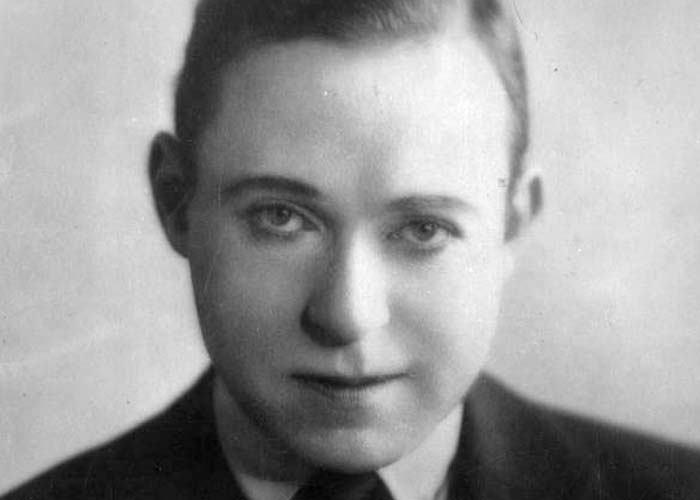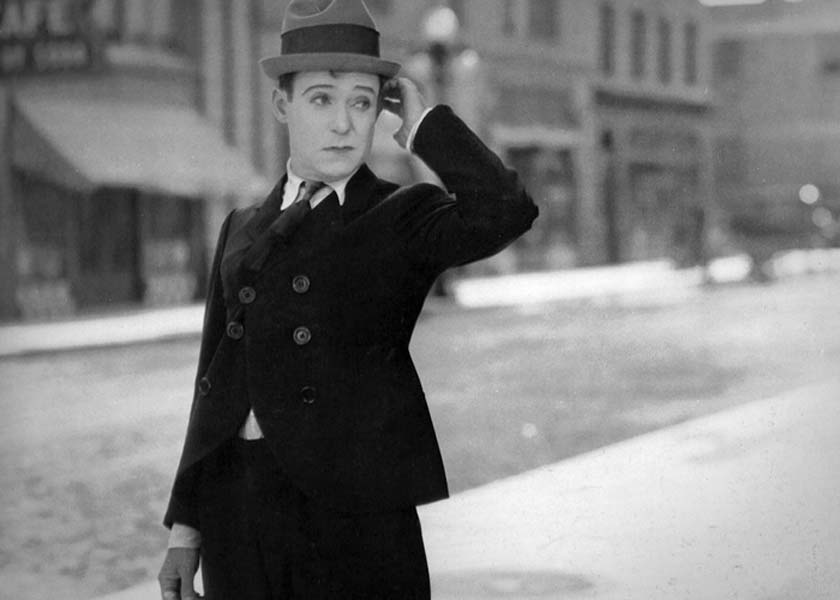Synopsis
During World War I, Paul Bergot (Langdon), a mild-mannered Belgian soldier,
receives letters from Mary Brown, an American. Days before the end of the war,
Paul is captured by a huge German soldier (Arthur Thalasso). After the war, Paul
and the German, known as Zandow the Great,
immigrate to America. Zandow has
a traveling strong man
act, and Paul is his assistant.
Paul searches for Mary Brown in every city he and Zandow visit. In one city,
Gold Tooth
Lily (Astor), the girlfriend of a thief and drug dealer, sees a
policeman approaching and slips a packet of drugs into Paul’s coat pocket. The
drugs fall through a hole into the lining of his coat. Lily tries to retrieve the
drugs, and innocent Paul asks her if she is Mary Brown. Lily replies
affirmatively, and Paul gets in a taxi with her to go to her apartment. In the
taxi, she tries to search him, and Paul decides that she is not his Mary Brown. He
tries to escape from the cab. To get him to stay and go to her apartment, Lily
pretends to faint on the street. Paul has to carry her inside. In the apartment,
Lily chases a frightened Paul around the room. She finally catches him and gets
the drugs out of his coat. She gives Paul the key, and he rushes out of the
apartment. Next door, a plaque denotes the studio of a sculptress named Mary
Brown. Inside, a nude model is posing for a statue. Paul enters, sees the naked
woman, and runs away in terror.
The scene shifts to the once peaceful town of Cloverdale; peaceful no more, the
town has been taken over by gamblers and gangsters. Reverend Holy Joe
Brown
(Mong) opposes them. Head gangster Mike McDevitt (McKim) threatens Brown, who does
not frighten. The Reverend preaches that the walls of Jericho fell after Joshua’s
Israelite army had marched around the city for seven days. Emulating Joshua’s
method of attack, Brown leads his congregation through the streets. McDevitt
laughs at the parson and threatens to seize his blind daughter, Mary Brown, and
bring her into the gambling hall.
Zandow and Paul take a bus to Cloverdale. Paul has a cold; his sneezing and snuffling upset the other passengers. Paul, attempting to rub camphor on his chest, accidentally rubs on limburger cheese. He sniffs the limburger and proclaims that he smells. The passengers, agreeing with him, throw him off the bus onto a steep slope. He gains speed falling down the hill and crashes through the roof and back into the bus. In a cloud of dust and debris, Paul resumes his seat.
In Cloverdale, Zandow is greeted by McDevitt. He will perform in the gambling hall; the act concludes with Zandow being shot out of a cannon. Walking around the town, Paul meets his Mary Brown (Bonner) and soon is gently courting her.
The night of the performance, Zandow gets drunk, and McDevitt demands that Paul perform in his place. Since he cannot lift the heavy weights, Paul tries various comic maneuvers to satisfy the crowd. They demand that he perform the cannon trick. Paul readies the cannon, although he is incapable of shooting himself out of it. Outside, the Reverend and his people are marching around the gambling den. One of the drunken gamblers shouts that they should bring Mary Brown into the gambling hall. Paul, angered at this insult to his Mary, fills the cannon with powder and fires at the gamblers. He continues shooting in all directions. As with ancient Jericho, the walls of the gambling den crumple and fall. All the gangsters and gamblers run away. Cloverdale is peaceful once again.
Paul becomes town constable, and Mary assists him.
Discussion
Lots of gags, plenty of slapstick, and a rough and tumble finale make The Strong Man an amusing (though not necessarily laugh-out-loud funny) and appealing comic gem. The comedy is based on Harry Langdon’s unique persona, whimsical and innocent, with an inherent quality of poignancy and coy restraint. A feeble smile and owlish blink, accentuated by chubby jowls and wide eyes, give his rather sad-looking face a look of perpetual bewilderment. His body movements are also distinctive: he walks with a bouncing motion and moves his hands and arms in jerky and repetitive gestures.
The plot centers on Harry’s quest for his love, the girl of his dreams. Most women reject his timid, but persistent, approach as he searches for Mary Brown. Harry, modest and inexperienced, fears an aggressive woman, Lily, and flees the sight of a posing nude. Only the sweet and understanding heroine responds unreservedly to Harry’s unassuming personality and gentle wooing. His life settles into contentment once he has found the woman for him. Tramp, Tramp, Tramp (1926) and Long Pants (1927), Langdon’s other major films, also focus on his character’s quest for the woman of his dreams.
Trusting and accepting, Harry’s distinctive persona separates him mentally and socially from most other people. People respond to his perceived foolish behavior with either amused tolerance or annoyed rejection. During the bus scene, Harry does not realize that the passengers are irritated by his coughing and sneezing and angered after he rubs the smelly cheese all over his chest. He is unaware that he has disturbed them. When villains threaten Harry, he never quite understands the threat; however, if provoked, he can become aggressive and fight back. Harry’s perseverance leads to the triumph of his innocence and goodness.

Langdon came to films late in his career which had begun in 1896 at age twelve with an appearance in amateur vaudeville. He had played carnivals, circuses, and tent shows and had been a small-time performer in vaudeville for many years before making his screen debut in 1924 (at age forty) in a Mack Sennett two-reel comedy. His comedies with Sennett were funny and much appreciated by audiences. After two years with Sennett, his success led to a contract, at a substantial salary, with First National Pictures for feature films. Langdon acted as his own producer. His first feature Tramp, Tramp, Tramp (1926), featuring Joan Crawford in an early role, was followed by The Strong Man (1926) and Long Pants (1927), both directed by Frank Capra. The success of these films earned Langdon a reputation as one of the best comedians in Hollywood.
After Long Pants (1927), Langdon, who, according to Capra, wanted
more pathos in the style of Chaplin, assumed the director’s chair on his films;
unfortunately, his attempts to direct himself turned out badly. His first two
self-directed productions, Three’s a Crowd (1927) and
The Chaser (1928), were panned by critics and ignored by the public.
His third (and last) feature, Heart Trouble (1928), was considered by
Variety to be his best self-directed film. Comparing his films,
Variety summarized the factors that had led to Langdon’s decline:
The comic does less of the emoting he gave way to in his last two. He abandons
to a great extent his ambition to be the complex of a tragedienne and a
comedian. Heart Trouble is more compact, and the story is more
actionful.
The reviewer also noted that the film had an unsung opening in New York, probably
due to a lack of interest by the distributor, First National Pictures. By the
middle of 1928 Langdon was dropped by First National Pictures. His position with
the distribution company was conditional on producing box-office successes.
Langdon, who had risen as the proverbial meteor, fell just as quickly.
In 1929, Langdon signed with Hal Roach Studios and returned to making two-reelers. Through the 1930s, Langdon starred in low-budget shorts for several studios, including Educational Films Corporation of America, Paramount Pictures, and Columbia Pictures. He had relatively small roles in a few feature films, including Hallelujah, I’m a Bum (1933), My Weakness (1933) and Atlantic Adventure (1935). He toured Europe with his stage show. In 1939, Langdon had a supporting role in Zenobia, a comedy starring Oliver Hardy (appearing without Stan Laurel). Langdon did not act with Hardy again, but he wrote gags for several of Laurel and Hardy's subsequent films. He was still making shorts when he suffered a heart attack in December 1944 and died at age sixty.
The Strong Man was Frank Capra's directorial debut. Capra’s career began in 1922 at a small production company, Fireside Productions, in San Francisco, California, where he learned the fundamentals of filmmaking. He soon moved to Hollywood where he worked as a prop man, film cutter, and gag writer. At the Hal Roach Studio, he wrote for the Our Gang comedies. He worked at Mack Sennett Comedies from 1924 to 1926 as a gag writer for Ben Turpin, Billy Bevan, Ralph Graves, and Langdon. Capra cowrote Langdon’s first feature, Tramp, Tramp, Tramp (1926). He directed Langdon’s next two features, The Strong Man and Long Pants, which were critical and public successes. After Langdon dismissed him following disagreements during the production of Long Pants, Capra joined Columbia Pictures. A few years later, Capra was winning Academy Awards and becoming one of the most acclaimed directors in Hollywood. His most notable films include Lady for a Day (1933), It Happened One Night (1934), Mr. Deeds Goes to Town (1936), Lost Horizon (1937), Mr. Smith Goes to Washington (1939) and It's a Wonderful Life (1946).
Further Reading

